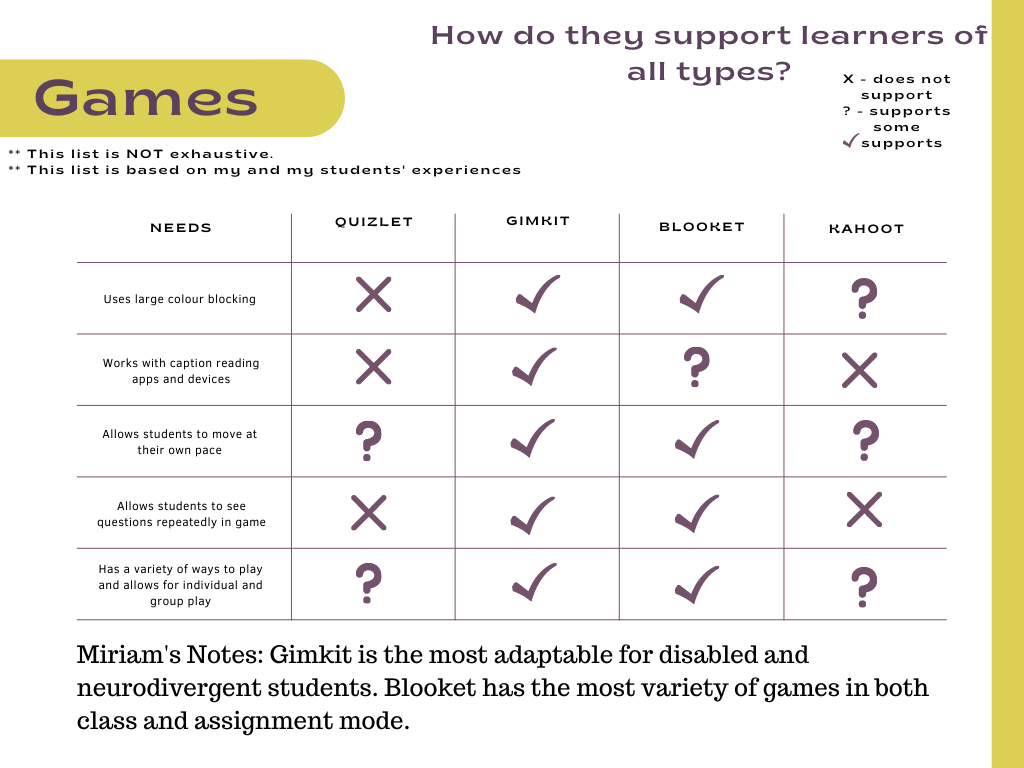|
Below is a quick reference tool I made comparing these resources. This post will be updated when I have more time :)
0 Comments
This is a quick list of accommodations that I employ as often as possible. These are easy to implement and often require little to no extra materials. What would you add to the list?
These ideas are always evolving and you can find an up to date list of things here. While the list in this post is full of quick ideas you can start using TODAY, the link above includes ideas separated by issue ad concern.
I started compiling these ideas long before I made the decision to work towards a degree in and get certified in Special Education. Rather, these ideas came from seeing learning and assessing issues in my classroom and doing my own research in how best to fix the issues I saw. Below are some quick ideas that anyone can implement today:
Some supplies you may wish to have on hand to support those taking tests are:
|
This page is dedicated to my compilation of ideas and resources. You can find my sources either in these posts or listed under the other pages in this menu.
Archives
June 2022
Categories
All
|

 RSS Feed
RSS Feed
